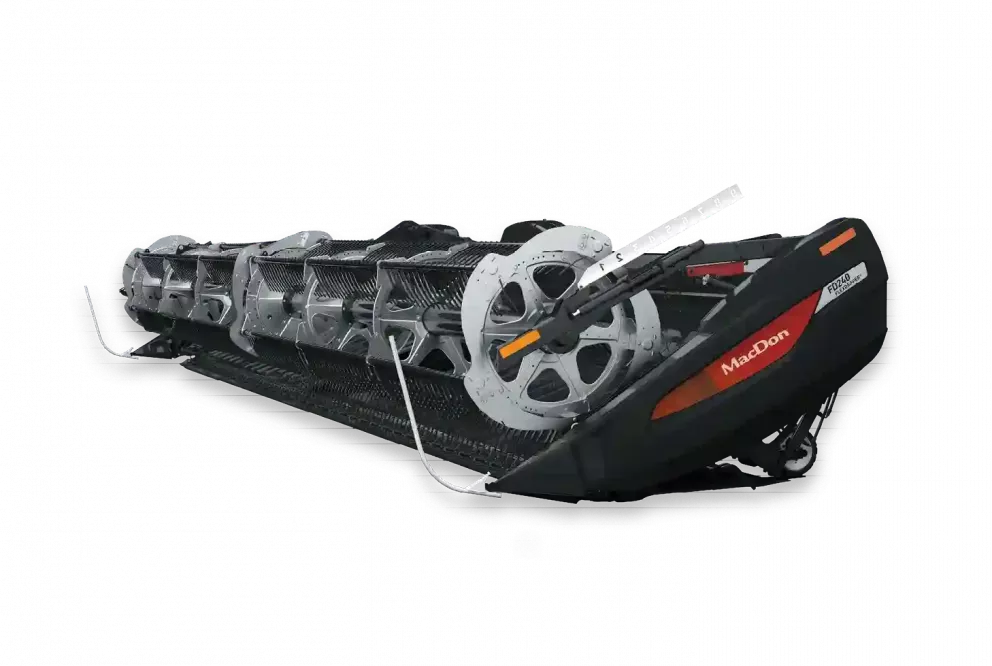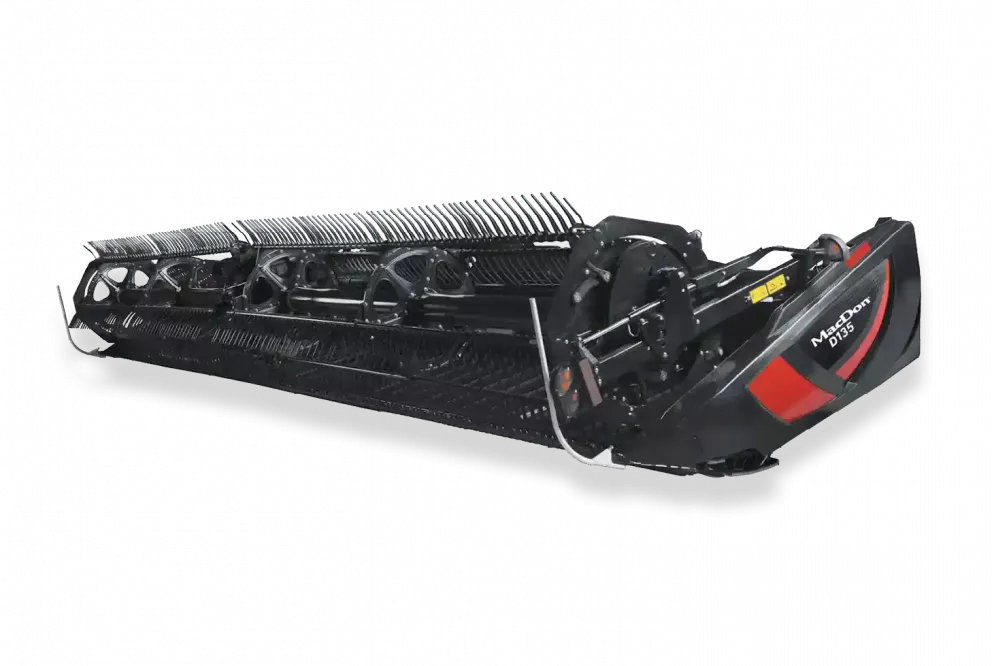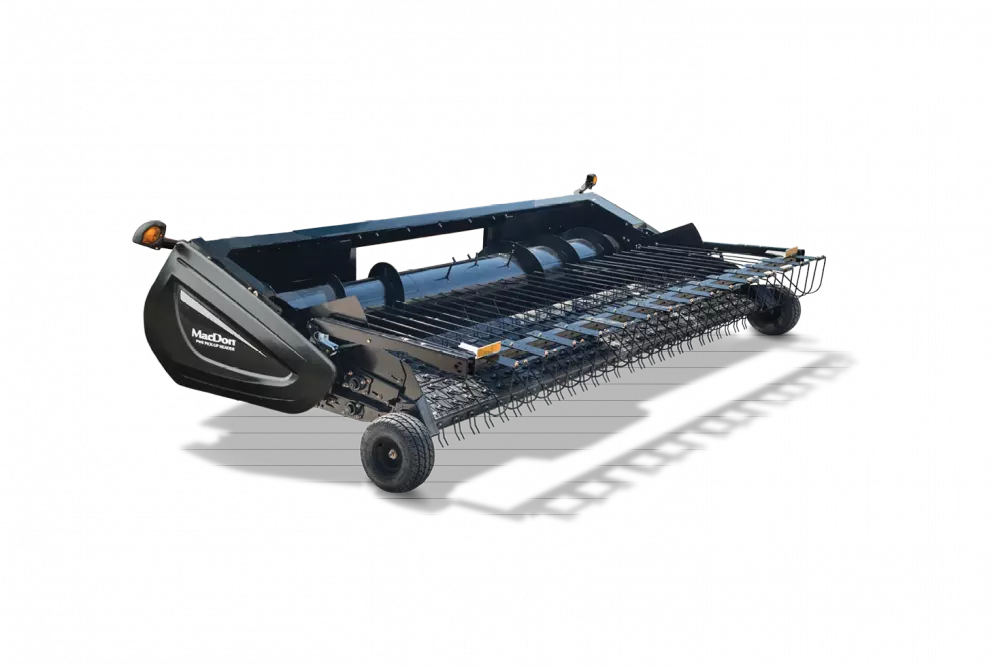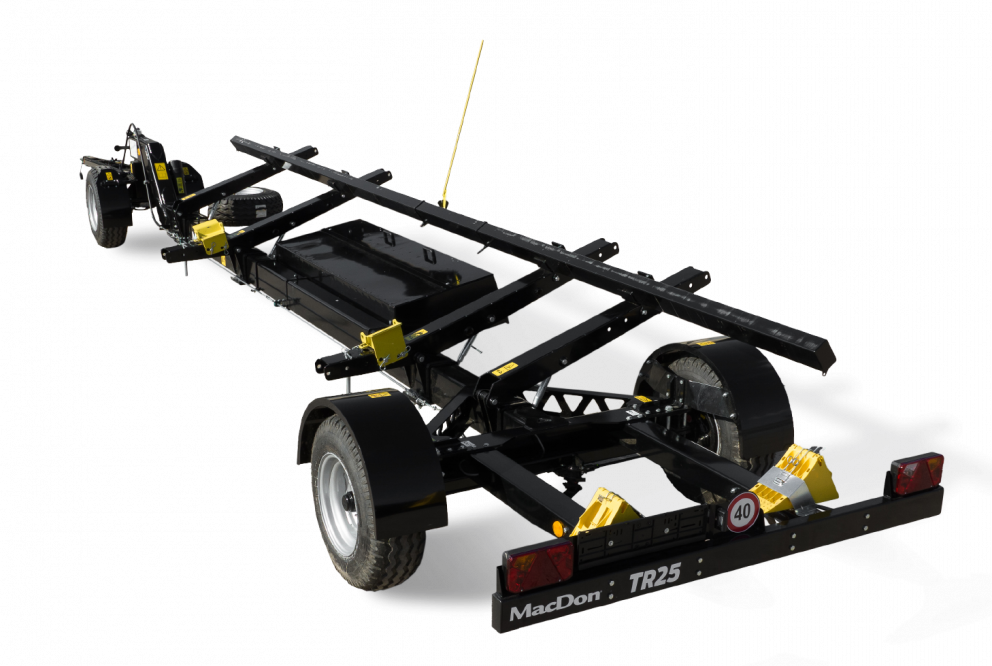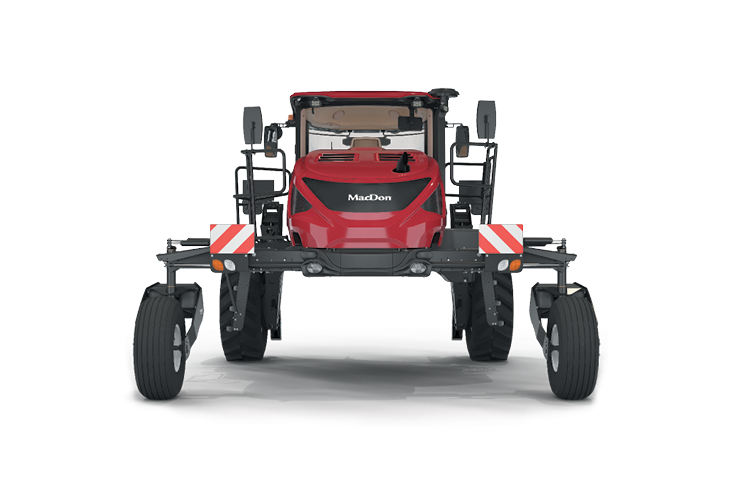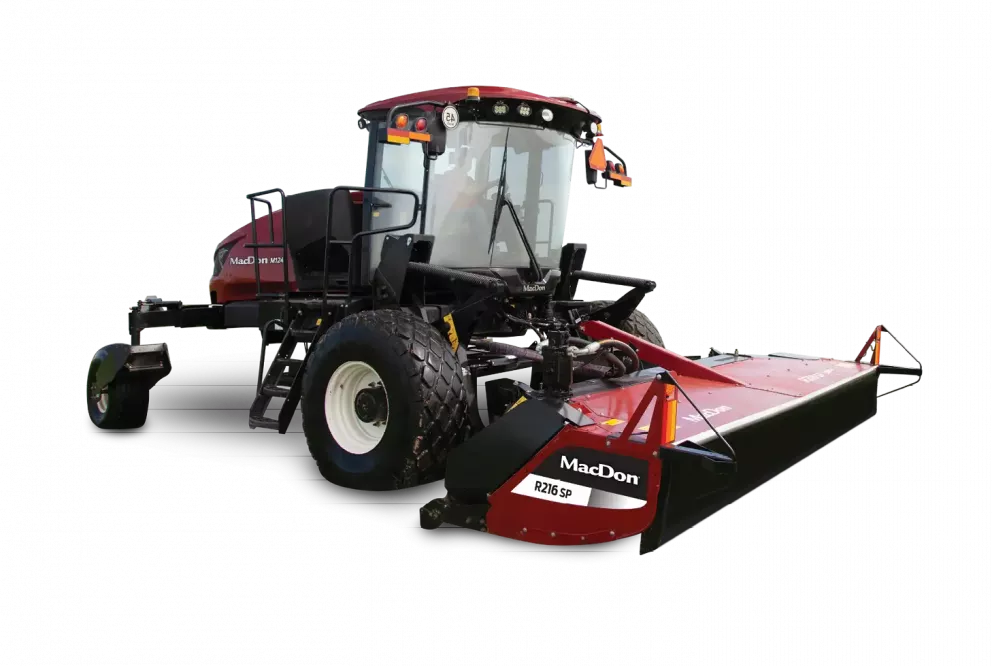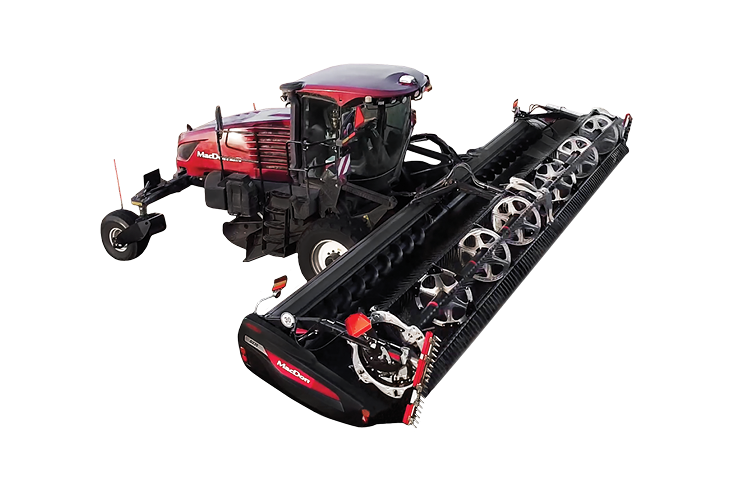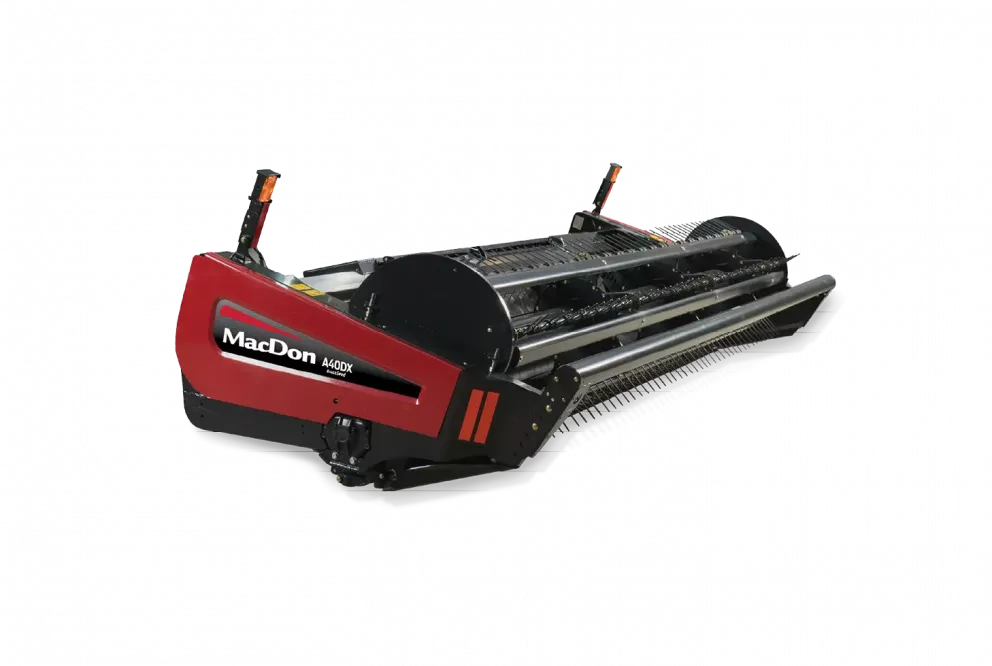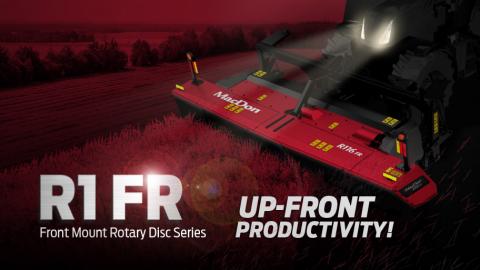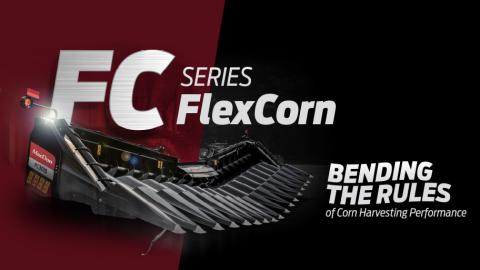Ron Hanmer
The drought of 1988 reaped heartbreak across the Canadian Prairies. In many places, yields were cut in half, and some farmers were left with nothing to harvest at all. By the end of the year, total crop losses would top $4 billion, and one out of every ten producers would find themselves out of agriculture altogether.
In central Saskatchewan near the town of Govan, Ron Hanmer and his dad had their backs to the wall trying to find a way to cut a crop too light to harvest using their usual methods.
“It was a desperate crop. I don’t think any of our wheat was the height of my knee,” recalls Hanmer. “Everybody was scrambling to figure out how to cut the crop that was facing them. Swathing was an option, but a poor one because unless you double swathed everything you would never pick it back up.”
But then a drop of hope fell to the Hanmers when they saw MacDon’s prototype combine draper header at a farm show.
“When we first saw it, it was kind of a eureka moment for us. My dad recognized it as similar to the canvas headers on Massey combines back in the early 50s. Because it didn’t use a table auger, you could scalp the crop right close to the ground, and you could get the reel to the knife, all the things you need to do in an extremely short crop. We knew that it was exactly what we needed.”
EVERYTHING ELSE THAT HAS COME AFTER HAS BEEN A FOLLOWER, AND THE ONLY REASON THEY ARE THERE IS BECAUSE MACDON SHOWED THEM THE WAY IN THE FIRST PLACE.
Unfortunately, the header was a unicorn and not for sale to just anyone.
“I was told at the time that MacDon only wanted the header sold to a farmer that would not beat it to death. Luckily, the salesman for Raymore Power and Equipment, Dickson Linklater, had some type of a connection with Gary MacDonald and was able to convince him that we were the right people. Obviously, that header was a huge leap of faith for everybody, I mean if we had wrecked that thing and reported that it was no good that might have ended the whole combine program for MacDon.”
But the header proved more than up to the job.
“That header performed absolutely flawlessly for us. We cut our whole crop with it, and I honestly don’t remember one problem. I had no issue reporting that the header worked great.”
Looking back, Hanmer still marvels at how well built that first MacDon header was.
“I can remember telling the dealer at the time that I wanted him to put on the same guards that were on my swather. But then MacDon got back to me and said, ‘no you don’t; you want exactly what’s on it. We’ve got the finest guards and sickles made in Germany that money can buy.’ And they were right because I don’t think that we broke even one sickle that first year.”
“Also, the knife drive on that header was almost indestructible. We finally changed the oil in the gearboxes after year three, and that’s about all the maintenance we needed for the knife drive. MacDon had done their research pretty darn good. They hadn’t come out with something that they had just thrown together; they knew what they were doing.”
Beyond using that first header to cut his grain, Hanmer may also have been the first to use a MacDon draper in lentils.
“We had a barn burner of a lentil crop in around 1990, and I ended up buying a flex head for our second combine to cut it. Well, I was cutting those lentils with that flex head, and it was doing pretty decent, but then one of my hired men asked if he could try the MacDon draper in those lentils. Now, remember, that was a rigid header, not a flex header, but it was an eye-opener just how well he cut lentils with that draper.”
“Around that time, I also remember having a really heavy crop of durum wheat. My flex head was a 25 foot, and my MacDon draper was a 36 foot, but in that durum, we were running much faster with the MacDon even though we were cutting 11 feet more with each pass, just because it fed so much better. Seeing that, I remember thinking ‘why do we have this flex head again?’”
The Hanmers ran that first MacDon draper for six years without any major issues, before trading it in for a new one.
“I honestly don’t remember who I sold it to, but the guy who bought it is probably still running it.”
For Hanmer, the header was a favorable introduction to MacDon’s commitment to producing a quality product, only reinforced by other experiences with the company over the years.
“A number of years ago, I was fortunate enough to go to a promotional day at John Deere’s factory in Waterloo, Ontario. There they were eager to show us the newest, state of the art laser that they were using to measure their shafts without touching them. So about a month later, I found myself at the MacDon factory in Winnipeg, and you know what they had in there? They had the exact same machine that John Deere was so proud of, and I think that MacDon may have even had their machine first.”
“That just told me a lot about MacDon. Here was a little company that may have been back shelf to John Deere in terms of size, but they had the same high-tech equipment. That showed me that these guys were really trying; they’re really trying to make it work.”
Since those early days, Hanmer has been loyal to MacDon drapers with the exception of a short dalliance with a competitive brand draper back in the early 2000s.
“I remember two of my men, both good operators, fixing sickles on those other headers two or three times a day. At the time, I hadn’t broken a sickle in days with my MacDons, and I remember asking myself ‘what’s not right with this picture?’”
Experiences like that have only reinforced Hanmer’s impression that MacDon is a company that goes the extra mile to do things right.
“It’s clear to me that MacDon puts more effort into their R&D than other manufacturers.”
Today, Hanmer’s operation, which has grown to eight combines, 20 employees and about 34,000 acres to make it one of the largest in the area, continues to rely on MacDon drapers for its success. He says that he remains appreciative that MacDon had the vision to pursue the draper concept, both for his operation and for agriculture in general.
“Without that first straight cut header from MacDon, it would have taken some time before someone else came along with an equally effective idea, and who knows where we would be now. Everything else that has come after has been a follower, and the only reason they are there is because MacDon showed them the way in the first place.”
